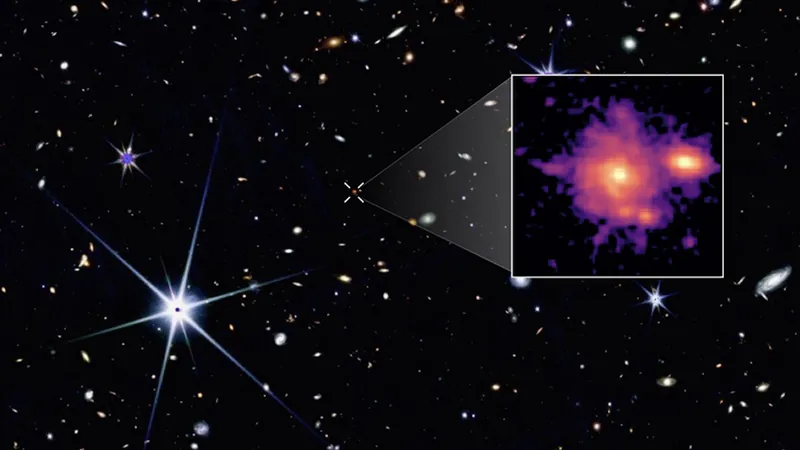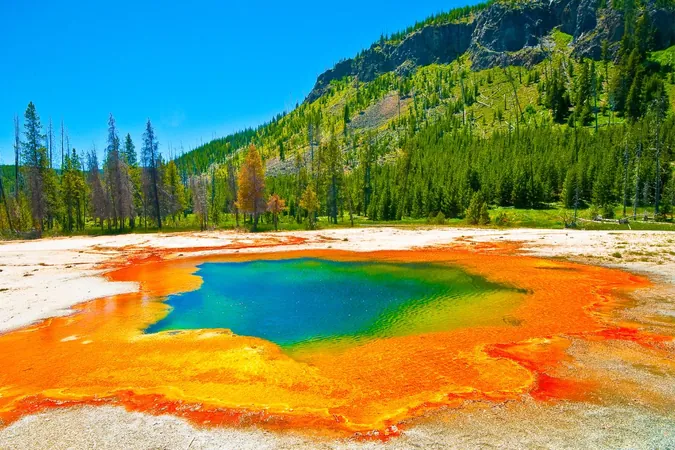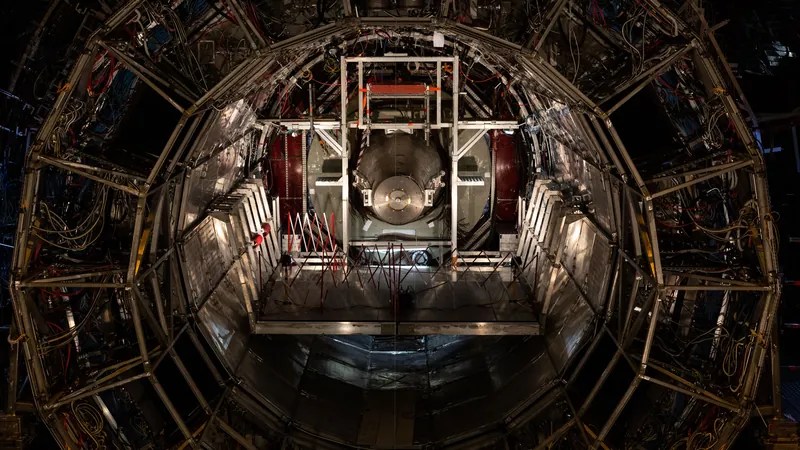
James Webb Telescope Uncovers Zhúlóng: The Most Distant Spiral Galaxy and Milky Way's Long-Lost Twin!
2025-04-16
Author: Benjamin
A Stunning Discovery in the Ancient Cosmos
Astronomers using the James Webb Space Telescope (JWST) have made a jaw-dropping discovery: a galaxy that mirrors the Milky Way in its youth, showcasing its spiral arms from a staggering 1 billion years after the Big Bang. This astonishing find casts new light on the early universe when it was a mere one-fourteenth its current age!
Meet Zhúlóng: The Milky Way’s Cosmic Twin
Dubbed Zhúlóng, after a mythical Chinese sun dragon believed to control time, this galaxy appears robustly evolved with a bulging core of ancient stars, a disk brimming with newborn stars, and two distinct spiral arms. It stands as the most distant semblance of our Milky Way identified thus far.
Challenging Long-Standing Theories
The discovery of such a fully formed spiral galaxy at such an early stage of cosmic history defies expectations. Traditionally, scientists believed that large galaxies like the Milky Way would take billions of years to form through multiple mergers of smaller galaxies. Zhúlóng, however, tells a different story.
Comparing Cosmic Siblings
While Zhúlóng is undoubtedly older than our own galaxy, it resembles a smaller sibling to the Milky Way. With a star-forming disk measuring about 60,000 light-years across and containing around 100 billion solar masses, it pales in comparison to the Milky Way's size and mass but still shines impressively against the cosmic backdrop.
An Accidental Discovery in the Panoramic Survey
This serendipitous finding occurred during the PANORAMIC survey, a groundbreaking project utilizing JWST's unique "pure parallel" mode. This allowed astronomers to observe two regions of space simultaneously, leading to the detection of Zhúlóng amid billions of distant celestial objects.
The Mystery of Rapid Galaxy Formation
Zhúlóng raises profound questions about galaxy formation. Scientists previously thought it took galaxies billions of years to develop, whereas Zhúlóng achieved a comparable size and structure in less than 1 billion years. This fuels the ongoing debate about how some galaxies seem to have grown too swiftly for current models to account for.
The Future of Cosmic Exploration
This remarkable revelation signals just how fundamentally the JWST is reshaping our understanding of the universe's early history. The team behind this discovery is pushing for follow-up observations, both with JWST and ground-based instruments, aiming to deepen our knowledge of this cosmic sibling.
As we delve deeper into the great celestial unknown, what other secrets lie hidden in the vastness of space? Stay tuned as astronomers continue to unravel the mysteries of the early universe!









 Brasil (PT)
Brasil (PT)
 Canada (EN)
Canada (EN)
 Chile (ES)
Chile (ES)
 Česko (CS)
Česko (CS)
 대한민국 (KO)
대한민국 (KO)
 España (ES)
España (ES)
 France (FR)
France (FR)
 Hong Kong (EN)
Hong Kong (EN)
 Italia (IT)
Italia (IT)
 日本 (JA)
日本 (JA)
 Magyarország (HU)
Magyarország (HU)
 Norge (NO)
Norge (NO)
 Polska (PL)
Polska (PL)
 Schweiz (DE)
Schweiz (DE)
 Singapore (EN)
Singapore (EN)
 Sverige (SV)
Sverige (SV)
 Suomi (FI)
Suomi (FI)
 Türkiye (TR)
Türkiye (TR)
 الإمارات العربية المتحدة (AR)
الإمارات العربية المتحدة (AR)